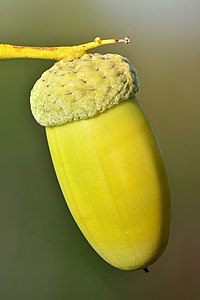
Photo from wikipedia
The use of native grasses for both restoration and commercial purposes is becoming increasingly important globally. Many native grasses have limited success in seed‐based restoration (e.g. post‐mine rehabilitation) and commercial… Click to show full abstract
The use of native grasses for both restoration and commercial purposes is becoming increasingly important globally. Many native grasses have limited success in seed‐based restoration (e.g. post‐mine rehabilitation) and commercial industries (e.g. agriculture) due to poor seed germination and handling. Seed‐enhancement technologies can assist in overcoming these barriers. This study aimed to use combinations of seed enhancements to overcome the germination and handling challenges in two dominant Australian native grass species with demand in restoration and commercial industries (Triodia wiseana C.A Gardner and Rytidosperma caespitosum [Gaudich.] Connor & Edgar). Selected enhancements included hydropriming (including inoculation with karrikinolide [KAR1]), flash flaming, and seed coating. Combinations of these seed enhancements allowed improvements in both germination (by up to 55% and 18% for T. wiseana and R. caespitosum, respectively) and floret geometry (flowability, as measured through a mechanized seeder, improved by up to 6‐fold and 17‐fold for T. wiseana and R. caespitosum, respectively), with the order of enhancement application being important. The responses of each species to enhancements corresponded with key biological processes and ecological cues required for recruitment events in nature, such as fire and rainfall events. Triodia wiseana germination was driven by fire‐related cues (i.e. KAR1, flaming), while R. caespitosum germination was highest in response to moisture‐related cues (i.e. hydro‐priming). Responses to seed enhancements (and combinations of) may have implications for the management and scaled use of the targeted species. This can assist in improving the restoration and commercial success of the study species, and potentially other grasses with germination and handling challenges, into the future.
Journal Title: Restoration Ecology
Year Published: 2020
Link to full text (if available)
Share on Social Media: Sign Up to like & get
recommendations!